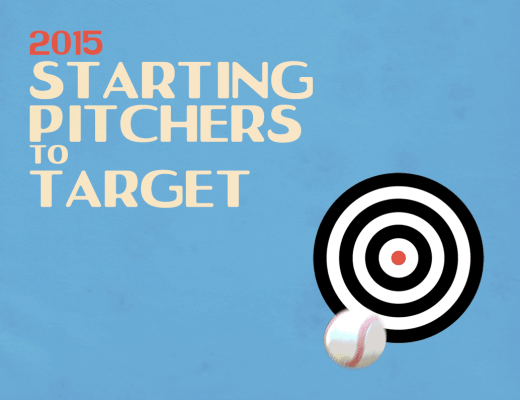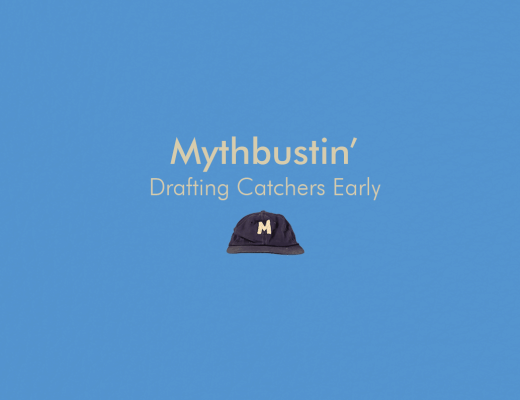Rotisserie may be the most popular version of fantasy baseball leagues but points-based formats continue to not only exist but also grow in popularity. You wouldn’t know that though if you read fantasy baseball websites or look up rankings because most of the fantasy baseball information on the internet is catered to those dang roto leagues. If you happen to find yourself in a points league, you should probably know how to adjust your strategy and rankings while the rest of your league is left staring at roto rankings and figuring out what to do with them.
While roto leagues only look at a few key stats, points leagues come from the fantasy football style of awarding points for nearly all stats. So, unlike standard roto leagues, a hitter gets properly awarded for hitting a double or triple and they get properly penalized for striking out or getting caught stealing. These are all important parts of being a hitter in actual baseball but they are meaningless stats to standard roto players.
Points leagues are a bit trickier to write about because there is not a standard scoring system used across the fantasy baseball universe. In this article, I’ve done some comparisons between points and roto leagues using the default CBS Sports scoring system:
- Hitters: 1B (1 pt), 2B (2 pt), 3B (3 pt), HR (4 pt), RBI (1 pt), Run (1 pt), SB (2 pt), CS (-1 pt), KO (-0.5 pt), BB (1 pt)
- Pitchers: Win (7 pt), Loss (-5 pt), IP (3 pt), HA (-1 pt), BB (-1 pt), KO (0.5 pt), ER (-1 pt), Sv (7 pt), QS (3 pt)
Ultimately, your scoring system will dictate player value so be aware of it. In this case though (and in the case of most points leagues), we see that there are quite a few stats that are accounted for that are not typically accounted for in valuing roto players. In trying to determine which players should change value in points leagues, I created a crude little stat called Point League Rating Score that simply calculated the point totals for the stats that are unique to points leagues for hitters (2B, 3B, CS, BB, KO) and for pitchers (IP & Losses are the main ones but I also included Ks and SVs because I’ve found a strong correlation with these stats to a change in points league values).
In my years of looking at points leagues versus roto leagues, I’ve come up with the following four tenets to keep in mind:
Health plays an important role in point leagues. If you have a great player, you need him to play in order to accrue points. Rate-based stats like ERA/WHIP/AVG don’t mean as much as net production.
Strikeouts are important in two ways. You want to be cautious of hitters with high strikeout rates while you give bonus points to hitters who can avoid strikeouts. In addition, you want to target pitchers who can accumulate strikeouts even if their ERA/WHIP may be a bit higher.
Extra-base hits are much more important for point leagues. Hitters who can hit doubles and triples provide great value that moves them up in the point rankings.
Hitters who draw a lot of walks also have more value so look towards OBP rates over AVG when comparing players.
With all of that in mind, I came up with the following spreadsheet that shows how the values change from roto to points leagues (which you can view and download here):
Key Hitters To Move Up In Points Leagues
- Carlos Santana (40th ranked hitter in Roto to 17th in Points Leagues)
- Matt Carpenter (69 in Roto / 34 in Pts)
- Ben Zobrist (81 in Roto / 37 in Pts)
- Joey Votto (74 in Roto / 52 in Pts)
- Denard Span (86 in Roto / 58 in Pts)
For Carlos Santana and Joey Votto, they strike a nice balance of being able to hit a good amount of doubles while racking up a huge amount of walks. These are two wonderful hidden factors in points leagues. Carpenter also is a extra-base hits machine and he’s not as affected in points leagues by his lack of HR and SB ability. Zobrist and Span meanwhile have such good value because they mix extra-base hits with an ability to not strike out a ton, which is also valuable here.
Key Hitters To Move Down In Points Leagues
- Adam Jones (11 in Roto / 23 in Points)
- Ian Desmond (28 in Roto / 50 in Points)
- Chris Davis (32 in Roto / 61 in Points)
- Carlos Gonzalez (47 in Roto / 82 in Points)
- J.D. Martinez (54 in Roto / 86 in Points)
The same story with pretty much all of these guys is this: they don’t walk much and they strike out a lot. The biggest sin for a player in points leagues is not being able to draw walks. Hitters who strike out a lot also can be a huge drain to your roster (especially in leagues that penalize you more than the settings I used above) so try to avoid players who hit on both marks. Even a player like Corey Dickerson can be hurt by these two factors despite being projected among the league leaders in extra-base hits.
Key Pitchers To Move Up In Points Leagues
- Justin Verlander (37 in Roto / 18 in Points)
- Zach Britton (84 in Roto / 23 in Points)
- Jeff Samardzija (54 in Roto / 24 in Points)
- Ian Kennedy (41 in Roto / 32 in Points)
- R.A. Dickey (95 in Roto / 35 in Points)
These particular movements in rankings are pretty heavily reliant on the projections so take them with a grain of salt if you think Dickey and Verlander won’t live up to their projections. The idea here though is that Dickey and Verlander are still both projected to pitch over 200 IP and innings are valuable in points leagues because they’re a major source of points that can overcome their slightly higher ERA’s and WHIP’s (which are generally more important in roto leagues).
For Samardzija and Kennedy, their high strikeout totals can offset some of their other weaknesses in roto leagues to move them up the rankings (especially true in leagues that aware even more points for strikeouts than the settings I used above).
For Britton, he’s a mediocre RP by most standards but even a mediocre RP is valuable in points leagues because Saves are more important than any other stat to an RP so as long as they’re getting Saves then they’re valuable.
Key Pitchers To Move Down In Points Leagues
This list could include any number of players because the main thing that hurts a projected point value is a projected lack of innings pitched. So, players coming off injury like Masahiro Tanaka or Matt Harvey are projected for lower inning totals which would mean less points for them to accrue (even though their rate stats like ERA and WHIP would still be great for roto leagues). Aside from that, looking at top pitchers with slightly lower strikeout rates (like Jordan Zimmermann) is another way to gauge who might have a drop in value.
Conclusion
Your scoring system is everything. The rankings you see above likely will differ in your own league. Stolen bases or strikeouts are often valued a bit differently so pay attention to how your scoring system might over or undervalue those. For points leagues, I think it is essential to generate your own custom projections based on your scoring settings because there won’t be any rankings out there that are a perfect match for your own settings. Check out my customizable Excel cheatsheets to input your league settings and generate your own league projected values.




Nicholas Schuller
03/17/2015 at 3:04 PMAwesome article! Thanks for doing this work.
Nicholas Schuller
03/26/2015 at 3:38 PMI just drafted all five hitters to move up, and all at good spots. Thanks!